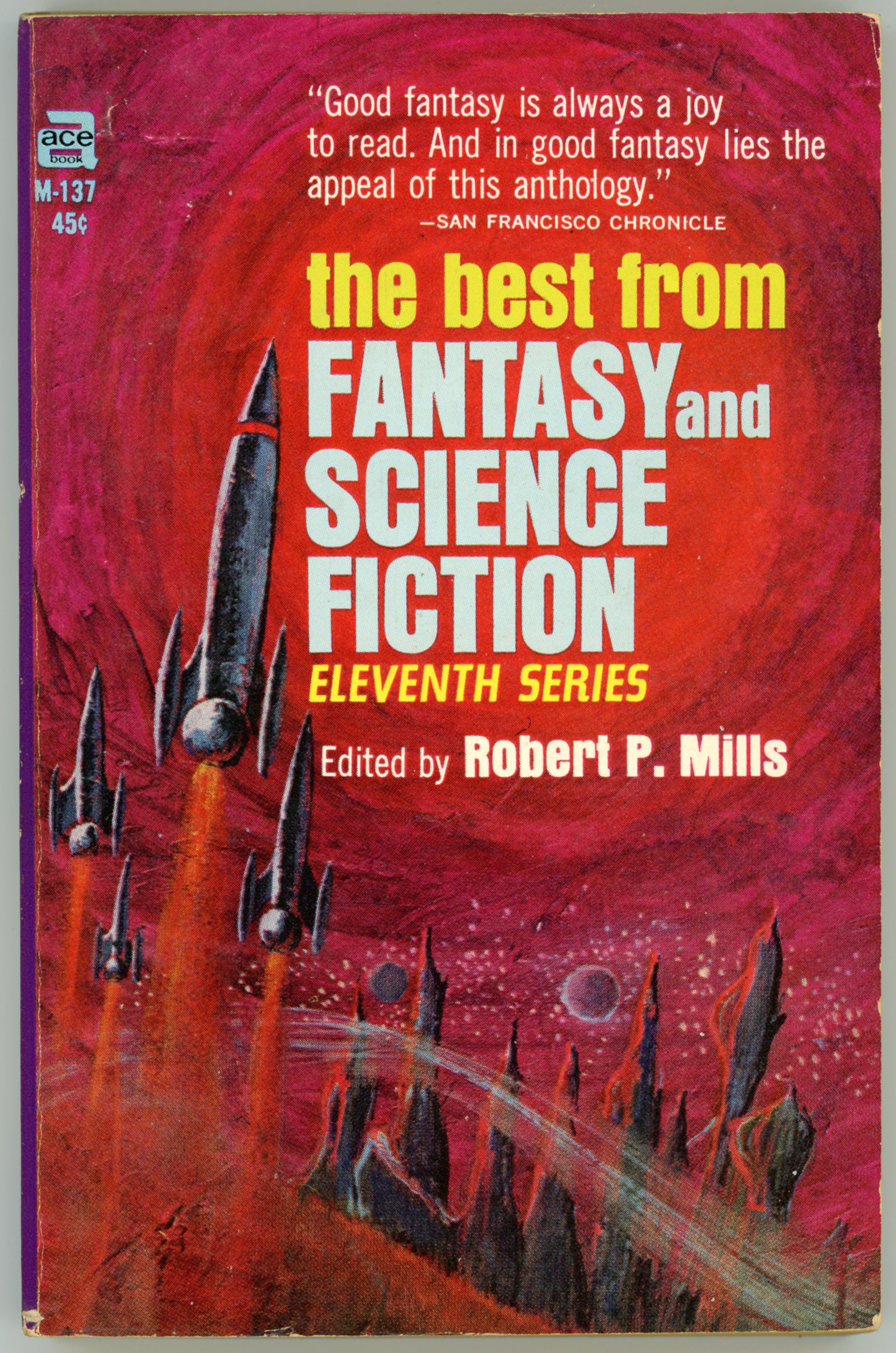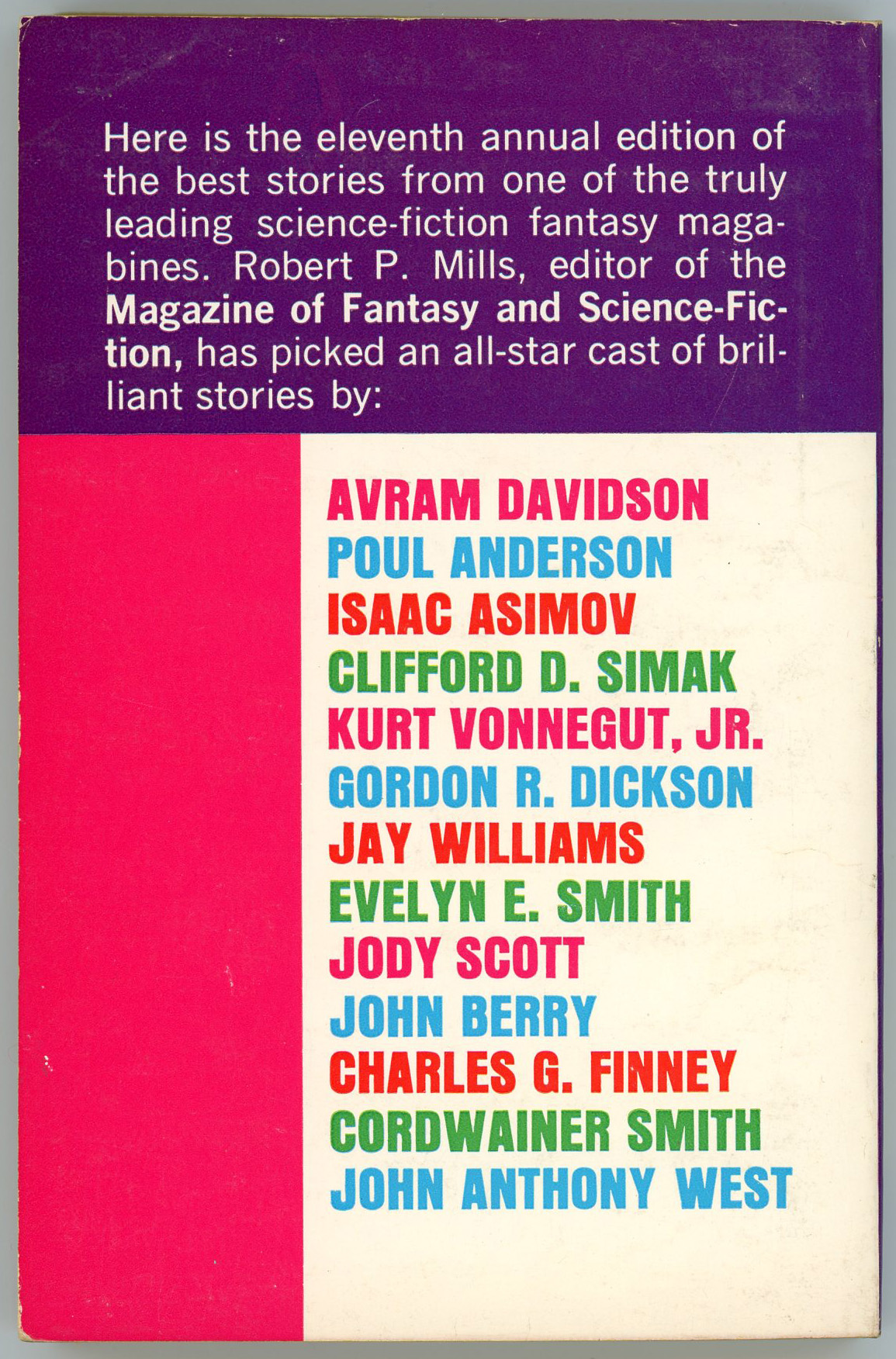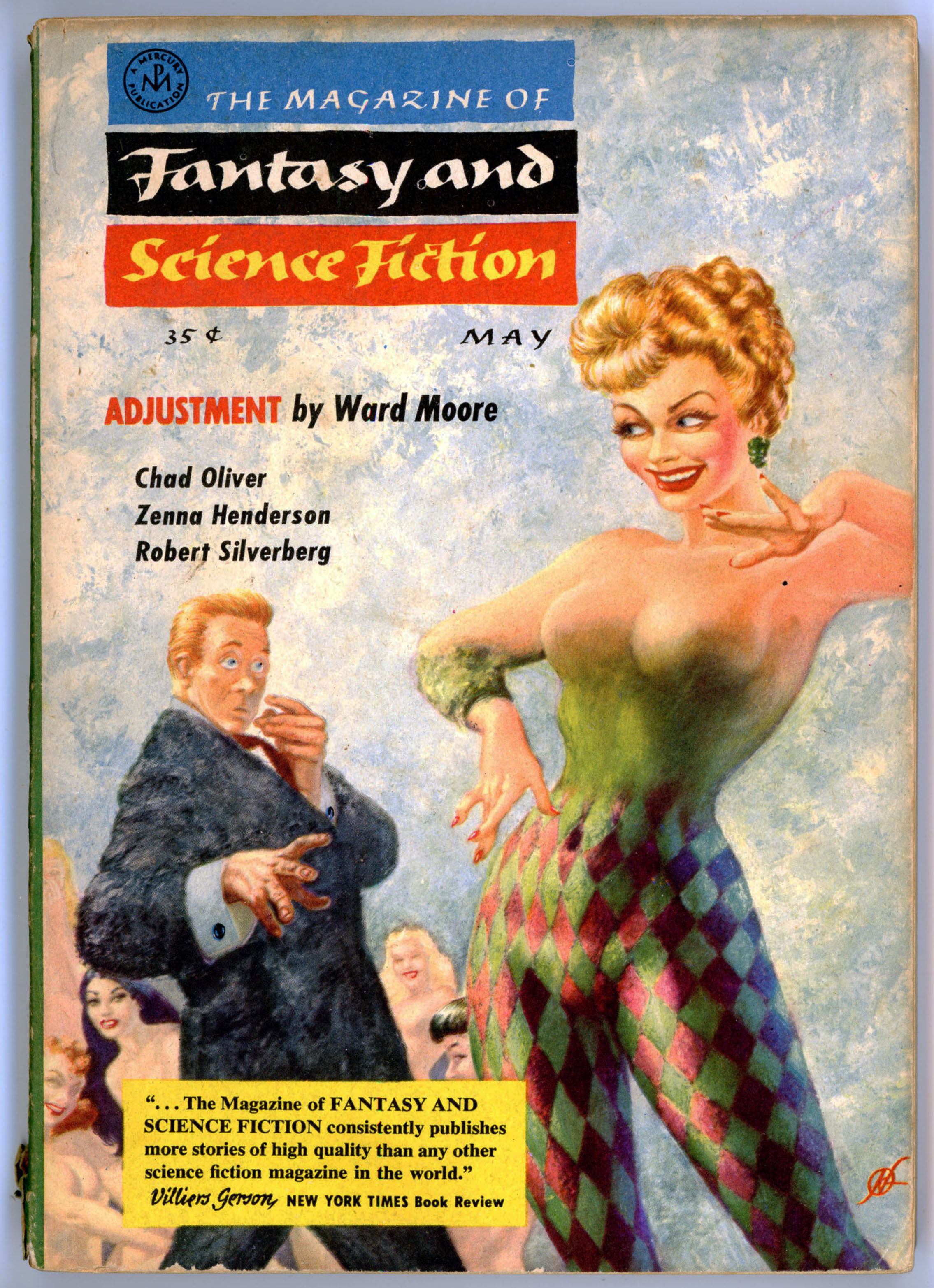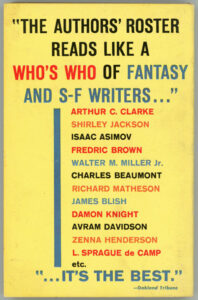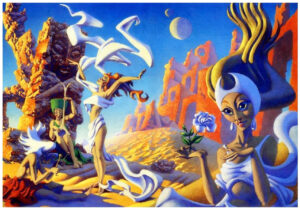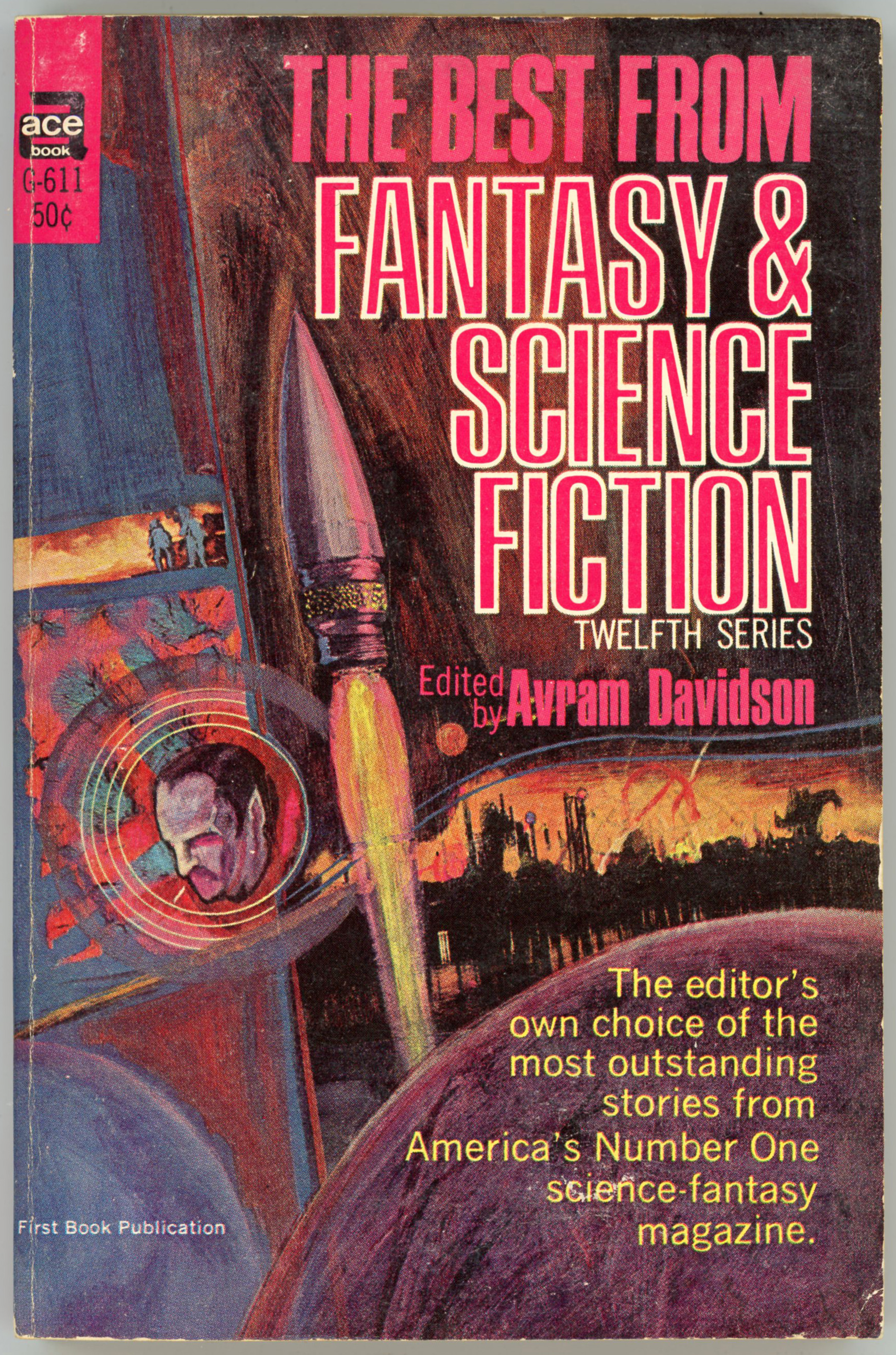A central theme of science-fiction and fantasy has long been time travel, which – if a story of that genre is fully developed – can entail an exploration of the nature and implications of parallel universes, in terms both literary and historical. Among the myriad of such stories, one of the best by far (well, the best I’ve ever read) is Ward Moore’s Bring the Jubilee, which takes a very novel approach (pardon the pun!) to the concepts of time travel and alternate history.
The novel is very well described at Wikipedia and elsewhere, so I won’t rehash it in detail here. Suffice to say that in terms of plot – taking for granted the reality of time travel, of course! – the most original aspect of Moore’s story is that the world we “know” from 1863 onwards – and thus the very world are living in, here, now, today in 2023 and thus into our future, exists because of the irrevocable alteration of a pre-existing and now-extinguished timeline in which the Confederacy achieved victory over the Union. This change – the novel’s Jonbar hinge – commences in that timeline’s year of 1952, when protagonist Hodgins “Hodge” McCormick Backmaker travels back to July 2, 1863 with the intention of observing the Battle of Gettysburg in general, and the fight for Little Round Top, in particular. Fully interacting with the world of the past – his past – not a passive observer, his presence changes the Confederate Victory of his timeline to the Union victory of ours, eventuating in a course of events – both domestic and international; for good, ill, and yet unknown – that we know today. And with this, Backmaker is forever trapped in our world, the involuntary, tragic, and solitary exile from a timeline and universe that no longer exists, and which from our perspective never existed to begin with: Even if a time machine were to be invented in our world, there is nothing for him to return to.
All Backmaker knew is gone; all those he has known only exist in memory: His memory.
One could write far more about this exceptional work. Suffice to say that in terms of plot, world-building, historical insight (welll… at least insight into the history of our world!), character development, philosophical depth, and straightforward literary quality, Bring the Jubilee is more than excellent. Unlike the sense of humorous novelty inherent to some time-travel and alternate universe stories, Moore’s book is serious, philosophical, and ends on a note of true and deep pathos. (Which shouldn’t dissuade you from reading it – it’s that good!)
To the best of my knowledge it has never been adapted for film or video, but it would be more than worthy of such treatment.
____________________
Edmund Emshwiller’s cover art for the November, 1952 issue of The Magazine of Fantasy and Science Fiction – Ward’s novel encompassing pages 24 through 112, and thus most of this issue’s content – is somewhat different in style from other examples of his paintings, where human facial expressions and technology are presented in great detail. Here, protagonist Hodgins Backmaker’s face is hidden from us. We see him backlit from behind as as he enters the time machine, illuminated by a glowing ring of light suspended in the device’s center. This shadowed anonymity lends the scene an aura of adventure, power, and above, connotes the awareness of an impending step into the unknown. And, around the door to the time machine? Symbols of the Civil War and Confederacy: foggy silhouettes of soldiers; cavalry; artillery pieces; a steam-powered minibile.

____________________
Here are the covers of Moore’s story in novel form, issued by Ballantine Books one year later. You can immediately tell that it’s by Richard Powers, while his signature is at the bottom left corner of the rear cover). Neither an anthology nor a work of science-fiction based on themes like space exploration or extraterrestrials, Powers created a image comprised of symbols and themes directly drawn from the Civil War era: Soldiers in battle, bursting artillery shells, and a map the divided North America in Backmaker’s timeline of 1951. Given that most of the story transpires in the imagined Confederacy of the 1950s – the world descended from the Union defeat at Gettysburg – the advancing soldiers shown on the cover are all Southerners, with the Confederate flag flying above. Another touch:
This is one of the very few covers in which Powers includes a recognizable person – Backmaker himself (I suppose…!) at lower right, looking on, looking back, from the future. Whose future? His, or, ours?


____________________
Here’s the full cover, composited via Photoshop… (My own copy.)

The Appeal of Alternate History
Gavriel Rosenfeld
The Forward
April 20, 2007
Few subgenres of literature have been subjected to such longstanding critical scorn as alternate history. Despite the occasional publication of such masterpieces as Philip K. Dick’s 1962 novel, “The Man in the High Castle,” the more frequent appearance of duds like Newt Gingrich and William Forstchen’s much-maligned 1995 novel, “1945,” has reinforced alternate history’s reputation as the domain of armchair historians and literary hacks.
Of late, however, alternate history’s appeal has begun to grow. Historian Niall Ferguson’s 1997 edited volume of counterfactual essays, “Virtual History,” lent the genre new credibility within the field of history, while Philip Roth’s best-selling 2004 novel, “The Plot Against America,” greatly enhanced its reputation within the American literary establishment. Now, Michael Chabon’s provocative new novel, “The Yiddish Policemen’s Union” (HarperCollins), promises to help the genre of alternate history take yet another important step toward mainstream legitimacy. But while Chabon’s novel is an intricately plotted, wonderfully imaginative and ultimately successful work of literature, it is a weaker exercise in counterfactual speculation. Indeed, the novel resembles a “lite” version of alternate history that may leave connoisseurs of the real thing less than satisfied.
The best literary examples of alternate history — like Ward Moore’s 1953 novel, “Bring the Jubilee” (where the South wins the Civil War), or Robert Harris’s 1992 best-seller, “Fatherland” (where the Nazis win World War II) — combine a variety of elements: a clear point of divergence from the established historical record; clever and well-paced exposition of the reasons for history’s altered course; a convincing degree of plausibility, and a discernible stance on the question of whether the altered past is better or worse than the course of real history.
But whereas the most convincing works of alternate history tend to concentrate on a single point of divergence (the South wins the Civil War; JFK survives his assassination attempt), “The Yiddish Policemen’s Union” features several: The United States decides in 1940 to establish a territorial home for European Jewish refugees in Alaska; the Russians are defeated by the Nazis in World War II (though the Nazis ultimately lose to the Americans anyway); the Cold War never ensues, and the state of Israel is never created, as the Jews lose the 1948 War of Independence and are “driven into the sea.” Aficionados of alternate history will probably carp at the implausibility of the United States staying in the war for very long against a victorious Nazi Germany without the Soviet Union doing most of the heavy lifting on the eastern front. Others will view with skepticism the ideologically fanatical Nazis permitting millions of Jews to leave Europe, unmolested, for their Alaskan refuge.
But perhaps the most telling weakness about “The Yiddish Policemen’s Union” as a work of alternate history is the fact that arguably, its basic plot could have unfolded in nearly the same way as a conventional work of historical fiction. While Chabon’s basic allohistorical premise certainly lends the novel its distinctive mood, it is inessential to its basic plot — a noirish, detective-drama-cum-political-thriller whose fundamental contours (as most readers will deduce) have been inspired by today’s real historical headlines.
Few of these criticisms will bother Chabon’s many devoted fans (I remain an enthusiastic one). Most will be absorbed by the book’s engrossing narrative and won’t be bothered much by its diluted allohistorical dimensions. But devotees of alternate history will probably dissent. However much they may welcome the fact that some of America’s most celebrated writers are beginning to appreciate alternate history’s allure, they will likely insist that the genre still awaits its contemporary masterpiece.
Gavriel Rosenfeld is an associate professor of history at Fairfield University and is the author of “The World Hitler Never Made: Alternate History and the Memory of Nazism” (Cambridge University Press, 2005).

Other Stuff to Delight, Distract, and Divert You…
Ward Moore (Joseph Ward Moore)…
… at Wikipedia
… at Internet Speculative Fiction Database
…at FindAGrave
Edmund A. Emshwiller…
… at Wikipedia
… at Internet Speculative Fiction Database
“Bring the Jubilee”…
…at Wikipedia
… at GoodReads
…at The Alternate Historian (“Bring the Jubilee: A Misunderstood Alternate History Masterpiece”)
If the Confederacy had Won the Civil War…
…at History Answers (“American Civil War | How The South Could Have Won”)
…at AlternateHistoryHub (“What if the South Won the American Civil War?”)


